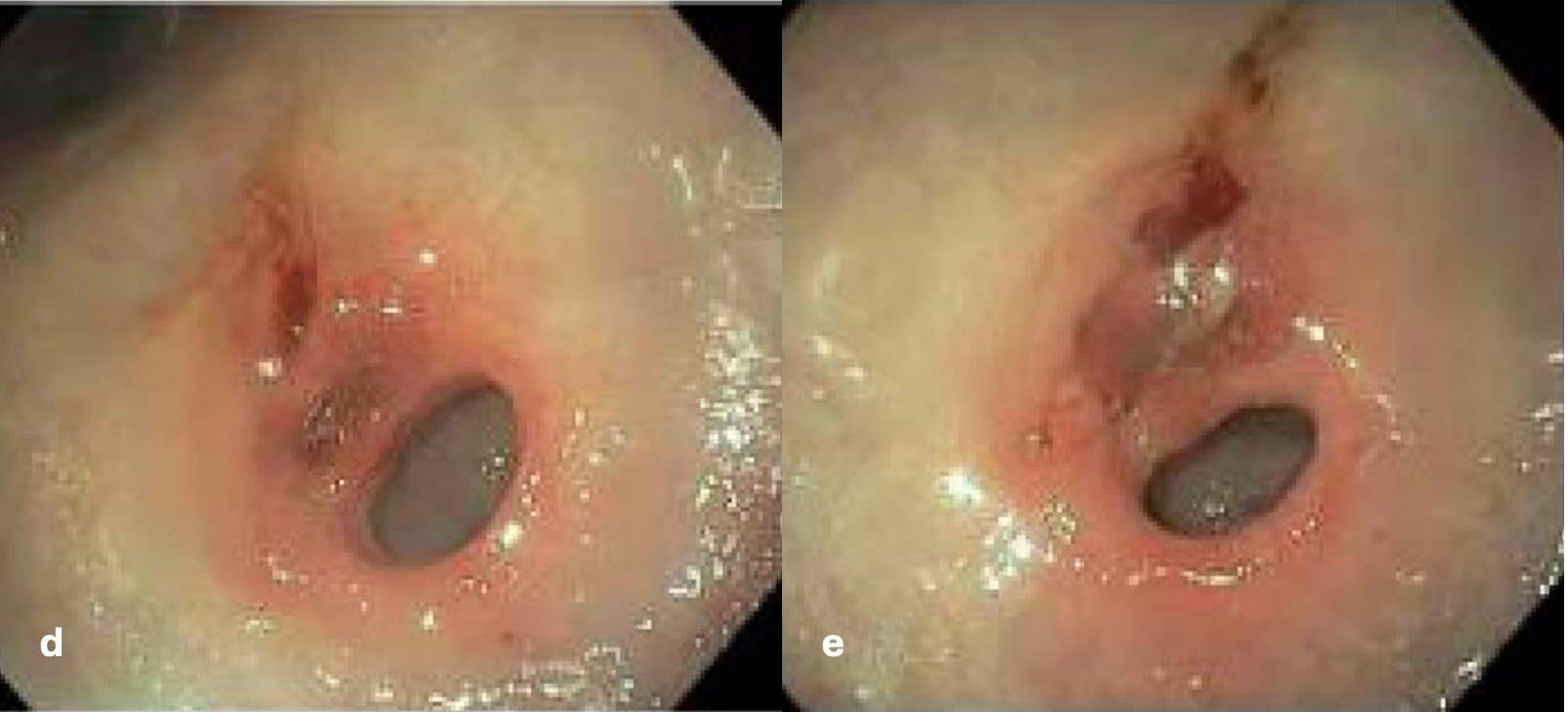Sunday Poster Session
Category: Stomach and Spleen
P2106 - Navigating Narrow Passages: Prepyloric Stricture and Sarcina
Sunday, October 26, 2025
3:30 PM - 7:00 PM PDT
Location: Exhibit Hall

Charles B. Woodall, DO
Louisiana State University Health Sciences Center New Orleans
New Orleans, LA
Presenting Author(s)
Charles Woodall, DO1, Nikki Arceneaux, MD1, Hunter Hall, MD2
1Louisiana State University Health Sciences Center New Orleans, New Orleans, LA; 2Louisiana State University, New Orleans, LA
Introduction: Sarcina ventriculi is a gram-positive, anaerobic cocci able to survive at low pH and has a characteristic tetrad appearance. Its role as a pathogen in humans is not fully understood but is thought to be due to consumption of contaminated food. It is associated with delayed gastric emptying and outlet obstruction, but serious complications such as perforation can occur. Pyloric stricture due to Sarcina infection managed with balloon dilation has been previously documented in the literature, but management of recurrent stricture seen as sequela of previous infection, to our knowledge, has not.
Case Description/
Methods: Our patient is a 35-year-old male with history of esophagitis, pre-pyloric stricture, Sarcina infection, and diabetes who presented with gastric fullness, nausea, and vomiting for five days. EGD attempted on day of presentation was aborted due to retained gastric fluid. Repeat EGD completed the next day demonstrated severe esophagitis, diffuse gastritis, a significant prepyloric stricture, and a cratered gastric ulcer measuring 20 mm adjacent to the stricture. The stricture was able to be traversed, but dilation was deferred due to proximity of the ulcer. Biopsies of the gastritis and stricture were negative for H. pylori and Sarcina. Oral pantoprazole and a pureed diet were prescribed at discharge. EGD with possible stenting was planned for ten weeks later, but he returned with recurrence of his symptoms after six weeks. Balloon dilation achieved mild improvement of the stricture as the ulcer was significantly improved at that time.
Discussion: Sarcina ventriculi is a rare but potentially serious pathogen known to cause strictures and other gastrointestinal complications. It is diagnosed by its tetrad appearance and can be found as a coinfection with H. pylori. No standardized treatment exists, but infections are typically managed with metronidazole as monotherapy or, more commonly, in combination with ciprofloxacin. Balloon dilation is generally attempted for strictures but may have minimal results in recurrent stricture as seen in our patient. In such cases, a Billroth I procedure may be the definitive treatment needed as surgical management has been effective in cases with refractory symptoms. The incidence of Sarcina infections has risen in recent years making the need for standardized management more evident. The growing use of GLP-1 receptor agonists and other medications that delay gastric emptying could be contributing to this increase by promoting bacterial overgrowth.

Figure: a. Initial view of the prepyloric stricture with large ulceration superiorly; b. Complete view of the ulcer with associated erythema and mucus present; c. Close up view of the ulcer bed

Figure: d & e. View of the stricture and ulcer on follow up EGD with significant healing of the ulcer and mild/minimal improvement in stricture diameter seen following balloon dilation
Disclosures:
Charles Woodall indicated no relevant financial relationships.
Nikki Arceneaux indicated no relevant financial relationships.
Hunter Hall indicated no relevant financial relationships.
Charles Woodall, DO1, Nikki Arceneaux, MD1, Hunter Hall, MD2. P2106 - Navigating Narrow Passages: Prepyloric Stricture and Sarcina, ACG 2025 Annual Scientific Meeting Abstracts. Phoenix, AZ: American College of Gastroenterology.
1Louisiana State University Health Sciences Center New Orleans, New Orleans, LA; 2Louisiana State University, New Orleans, LA
Introduction: Sarcina ventriculi is a gram-positive, anaerobic cocci able to survive at low pH and has a characteristic tetrad appearance. Its role as a pathogen in humans is not fully understood but is thought to be due to consumption of contaminated food. It is associated with delayed gastric emptying and outlet obstruction, but serious complications such as perforation can occur. Pyloric stricture due to Sarcina infection managed with balloon dilation has been previously documented in the literature, but management of recurrent stricture seen as sequela of previous infection, to our knowledge, has not.
Case Description/
Methods: Our patient is a 35-year-old male with history of esophagitis, pre-pyloric stricture, Sarcina infection, and diabetes who presented with gastric fullness, nausea, and vomiting for five days. EGD attempted on day of presentation was aborted due to retained gastric fluid. Repeat EGD completed the next day demonstrated severe esophagitis, diffuse gastritis, a significant prepyloric stricture, and a cratered gastric ulcer measuring 20 mm adjacent to the stricture. The stricture was able to be traversed, but dilation was deferred due to proximity of the ulcer. Biopsies of the gastritis and stricture were negative for H. pylori and Sarcina. Oral pantoprazole and a pureed diet were prescribed at discharge. EGD with possible stenting was planned for ten weeks later, but he returned with recurrence of his symptoms after six weeks. Balloon dilation achieved mild improvement of the stricture as the ulcer was significantly improved at that time.
Discussion: Sarcina ventriculi is a rare but potentially serious pathogen known to cause strictures and other gastrointestinal complications. It is diagnosed by its tetrad appearance and can be found as a coinfection with H. pylori. No standardized treatment exists, but infections are typically managed with metronidazole as monotherapy or, more commonly, in combination with ciprofloxacin. Balloon dilation is generally attempted for strictures but may have minimal results in recurrent stricture as seen in our patient. In such cases, a Billroth I procedure may be the definitive treatment needed as surgical management has been effective in cases with refractory symptoms. The incidence of Sarcina infections has risen in recent years making the need for standardized management more evident. The growing use of GLP-1 receptor agonists and other medications that delay gastric emptying could be contributing to this increase by promoting bacterial overgrowth.

Figure: a. Initial view of the prepyloric stricture with large ulceration superiorly; b. Complete view of the ulcer with associated erythema and mucus present; c. Close up view of the ulcer bed

Figure: d & e. View of the stricture and ulcer on follow up EGD with significant healing of the ulcer and mild/minimal improvement in stricture diameter seen following balloon dilation
Disclosures:
Charles Woodall indicated no relevant financial relationships.
Nikki Arceneaux indicated no relevant financial relationships.
Hunter Hall indicated no relevant financial relationships.
Charles Woodall, DO1, Nikki Arceneaux, MD1, Hunter Hall, MD2. P2106 - Navigating Narrow Passages: Prepyloric Stricture and Sarcina, ACG 2025 Annual Scientific Meeting Abstracts. Phoenix, AZ: American College of Gastroenterology.
